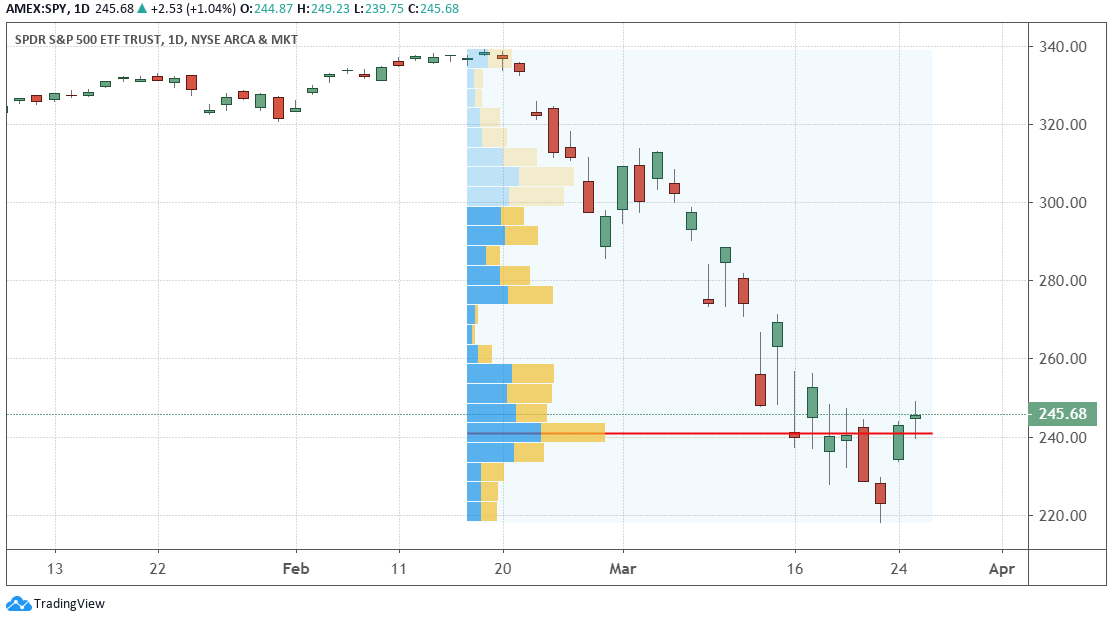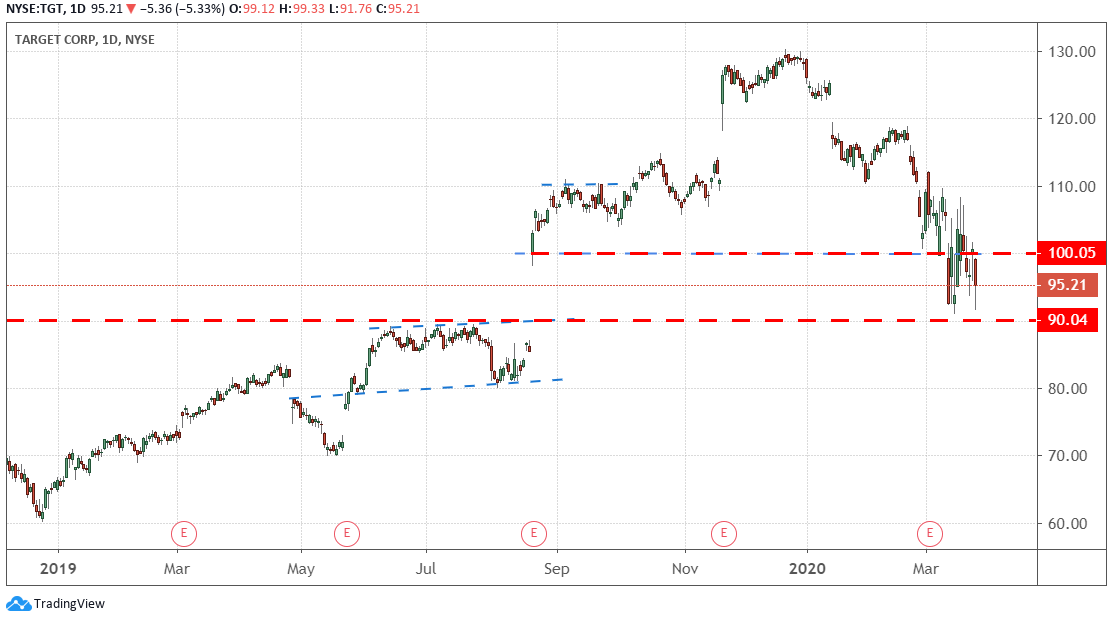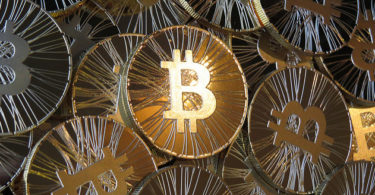This story was originally published here.
Investors drove the market higher on Tuesday in anticipation of the passage of a big stimulus bill designed to lessen the negative economic impact of the coronavirus from China.
Depending on which index you were watching, the gains were extraordinary.
The S&P 500 had its biggest one-day rise since 2008, and the Dow Jones Industrial Average hasn’t had a day like Tuesday since 1933. Both of those dates should remind traders that we aren’t out of the woods yet. One good day doesn’t make a trend.
However, while a big move like Tuesday’s tends to be unstable, from a technical perspective, it could still add some weight to a potential support level for the S&P 500. The broad market index is trading near its December 2018 lows.
Below, you can see a volume profile chart, which helps us see what price level traders are most active at for the SPDR S&P 500 ETF (NYSEARCA:SPY). SPY is an exchange-traded fund that tracks the S&P 500. It is an excellent proxy for the entire market.

Source: Charts by TradingView
As you can see, traders are clustered near $240 per share, which corresponds to the key support level of 2,400 we are watching on the S&P 500 itself.
Although we aren’t going to complain about a big day to the upside, traders should remain patient and cautious. The major indices tend to swing widely during a crisis, which rarely results in an immediate sustained move to the upside.
What we really want are smaller, consistent days to the upside. A calm, bullish trend may appear soon. But we expect an extended consolidation — a period of flat trading — of a few weeks before bulls are able to firmly take control.
What the Stimulus Bill Includes
The stimulus package from the Senate includes $2 trillion in spending, loan assistance and tax breaks. The size of the stimulus is roughly equivalent to 9.5% of U.S. Gross Domestic Product (GDP).
This puts the current plan in the same ballpark as Roosevelt’s First and Second New Deals, and it is about twice the size of the post-World War II Marshall Plan. We don’t know whether another round of spending will be necessary or effective, but traders seem to be initially optimistic about this round.
In our opinion, the parts of the bill that are most likely to have a short-term positive impact on the economy are the direct payments to individuals. Low- and middle-income citizens will receive direct payments of $1,200 per adult and $500 per child.
The argument in favor of this kind of stimulus rests on the economic principle of “marginal propensity to consume.” In other words, if the government gives a low-income consumer $1,000, their marginal propensity to consume (spend) that money is close to 100%.
Money given to businesses or high-income individuals has a much smaller propensity to be deployed into the economy.
For example, we must assume that the trillions of dollars being invested by the Federal Reserve in the U.S. banking system will probably be deployed very slowly, if at all. Keep in mind that most of the quantitative easing used by the Fed from 2008-2010 was kept as excess reserves rather than deployed as loans by the banks.
According to Bloomberg News, the bill also includes $500 billion in loan assistance to large businesses, $350 billion in aid to small businesses and $150 billion in aid to hospitals and healthcare facilities. It also increases unemployment benefits. This increase should also have a short-term impact on the market.
What to Expect
The focus on direct payments and benefits to individuals should provide a boost to retail over most other industries. We can’t say how long the effect will last, but our investment plan is to continue to focus on retail firms with strong fundamentals.
This is one of the reasons we still like Target (NYSE:TGT). The stimulus should help strengthen support for the stock as it trades near the bottom of its 2019 bullish gap. This would be an attractive support level anyway, so the stimulus increases the likelihood that the stock will make a move higher.

Source: Charts by TradingView
The stimulus should also help businesses that are transitioning toward a distributed workforce. That trend will help strong technology stocks continue to outperform in the near term.
We favor stocks like Microsoft (NASDAQ:MSFT), Amazon (NASDAQ:AMZN), Cisco (NASDAQ:CSCO) and others with a strong presence in cloud computing, remote-working software and file sharing.
The Bottom Line on the Stimulus
We expect the stimulus bill to have a positive impact on stocks, but it is unlikely to create an immediate reversal. We expect the government spending to increase the likelihood that support near 2,400 on the S&P 500 will hold in the short term.
Direct spending will increase demand from consumers, which should be good for retail and technology stocks. We recommend investors remain cautious while we wait for support to be confirmed.
Our investment strategy is still focused on selling options to maximize our premium income while the market settles. The fact that option premiums are high right now should work in our favor because it increases the potential profit from each option we sell.
Editor's Note: In the meantime, here's an amazing opportunity to get your money – including your coming stimulus check – to work for you…
65 Unique Ways ANYONE Can Make Extra Cash (Without Getting a Second Job)
Are you looking for great sources of real income, without having to get a second job?
Then keep reading, because author Neil George wants to send you his new book that profiles 65 simple ways to earn large amounts of work-free income.
…extra cash that you can collect ON TOP of your Social Security check…
…without messing around with crappy jobs. (Pizza delivery driver? No way.)
These are PROVEN cash-gushing strategies… the kind typically used by the wealthy elite.
And the best part…
Neil George has set aside copies of his book, Income for Life, and he’s willing to send you a hardback version today, ABSOLUTELY FREE (just pay shipping).
(Just 517 copies left, so click here to claim yours before it's ripped away.)
Here's just a sample of what you can find inside:
- Learn the secret of the $50,000 lump sum Social Security check. Seriously, it couldn’t be easier!
- Use what Neil calls the “F.H.A. Loophole” to get the government to pay your mortgage – PLUS receive hundreds in extra cash on top.(Page 217)
- Collect $100s for pictures in Old Family Photo Albums! Believe it or not, there is an easy way to turn your old artwork/photographs into $100 bills (certain businesses are desperate). (Page 297)
- Get paid every time your favorite song gets played on the radio! This little-known website allows you to tap into royalty payments every time your favorite song is played on the radio. Some lucky folks collect thousands of dollars a year! (Page 307)
- Pocket upwards of $197 PER HOUR simply by taking a walk through the woods in the fall… or $137 while visiting your favorite beach in the summer… and many, many more!
Needless to say, this book has become highly sought after.
So if you don't claim your free copy of Income for Life today, we'll send it to the person behind you in line…






